What is the name of the genetic disorder caused by the presence of an extra chromosome 21?
Turner syndrome
Klinefelter syndrome
Down syndrome
Huntington's disease
Correct Answer : C
Down syndrome is a genetic disorder caused by the presence of an extra copy of chromosome 21. It is also known as trisomy 21, because affected individuals have three copies of chromosome 21 instead of the normal two.
The extra chromosome 21 in Down syndrome occurs due to a random error in cell division, which leads to the production of an abnormal gamete (egg or sperm) with an extra copy of the chromosome. When this gamete fuses with a normal gamete during fertilization, the resulting zygote has 47 chromosomes instead of the usual 46, and develops into a fetus with Down syndrome.
Down syndrome is characterized by a range of physical and intellectual symptoms, including developmental delays, intellectual disability, distinctive facial features, heart defects, and increased risk of certain medical conditions such as leukemia and Alzheimer's disease. However, the severity and expression of these symptoms can vary widely among affected individuals.
 |
TEAS 7 Exam Quiz Bank
HESI A2 Exam Quiz Bank
Find More Questions 📚
Teas 7 Questions: We got the latest updated TEAS 7 questions
100% Money Refund: 100% money back guarantee if you take our full
assessment pass with 80% and fail the actual exam.
Live Tutoring: Fully customized live tutoring lessons.
Guaranteed A Grade: All students who use our services pass with 90%
guarantee.
Related Questions
Correct Answer is A
Explanation
The three germ layers that form during embryonic development are the ectoderm, mesoderm, and endoderm. The ectoderm is the outermost layer, and it gives rise to the skin, hair, nails, and nervous system. The nervous system develops from a specialized region of the ectoderm called the neural plate, which invaginates to form the neural tube. The neural tube ulmately gives rise to the brain and spinal cord, which make up the central nervous system, as well as the peripheral nervous system. The endoderm gives rise to the lining of the digesve and respiratory tracts, while the mesoderm gives rise to the musculoskeletal system, circulatory system, and several other organs. The exoderm is not a germ layer and does not exist during embryonic development.
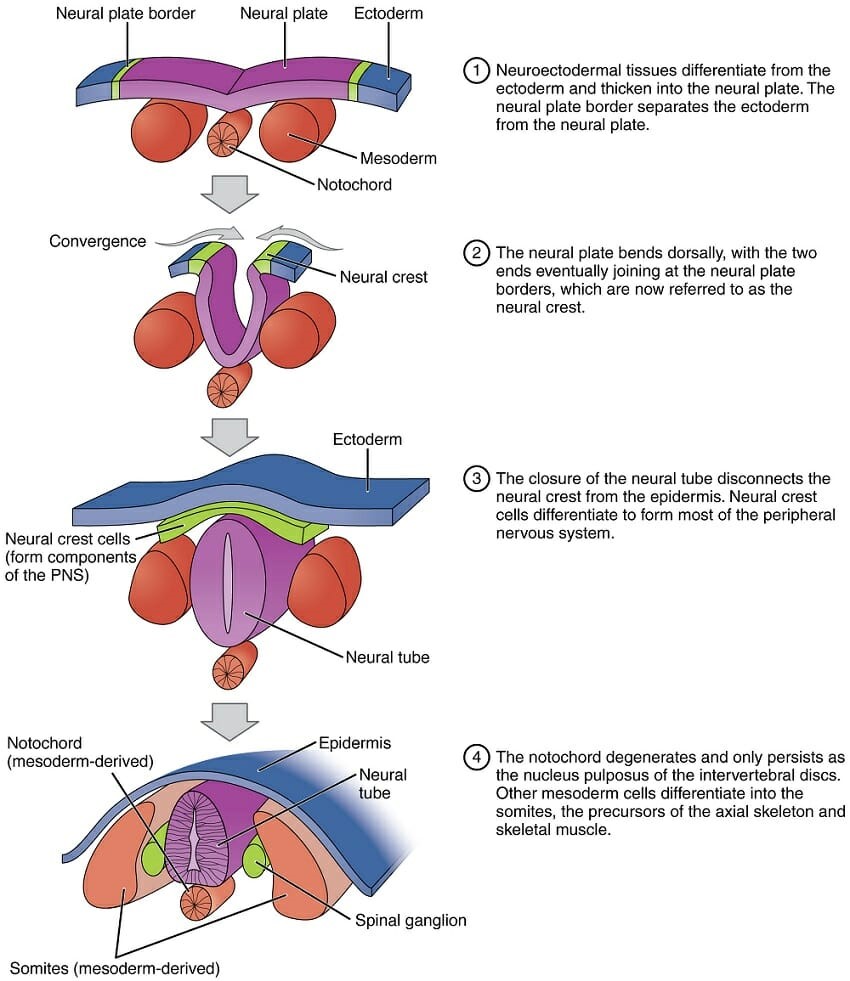
Correct Answer is B
Explanation
- Lithium (Li) is a metal from Group 1 (alkali metals) on the periodic table.
- Bromine (Br) is a nonmetal from Group 17 (halogens).
- When a metal reacts with a nonmetal, an ionic bond forms, resulting in an ionic compound.
- Lithium donates one electron to bromine, forming Li⁺ (cation) and Br⁻ (anion), which attract each other to form LiBr (Lithium Bromide).
Analysis of Other Options:
- A. Coordinate compound → Involves a metal ion bonded to a ligand via coordinate (dative) bonds, not relevant here. ❌
- C. Organic compound → Organic compounds contain carbon, but LiBr does not. ❌
- D. Covalent compound → Covalent bonds occur between two nonmetals, but lithium is a metal. ❌
Correct Answer is C
Explanation
Osmosis is the process by which water molecules move across a selectively permeable membrane from an area of high concentration to an area of low concentration, in order to equalize the concentration of solutes on both sides of the membrane. Selectively permeable membranes allow only certain molecules to pass through, while preventing the passage of others.
In osmosis, the movement of water molecules is driven by the concentration gradient of solutes, which cannot pass through the membrane. If one side of the membrane has a higher concentration of solutes
than the other, water molecules will move from the side with the lower concentration of solutes to the side with the higher concentration of solutes, in an atempt to dilute the solutes and equalize the concentration on both sides.
Osmosis is important in many biological processes, including the uptake of water by plant roots, the regulation of water balance in animal cells, and the preservation of food by adding salt or sugar to create a hypertonic environment that inhibits bacterial growth.
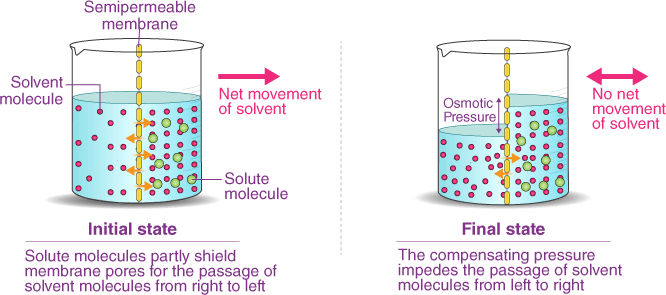 |
Correct Answer is C
Explanation
Innate immunity is a fundamental aspect of the body's defense mechanism that operates from birth. It offers immediate protection against a wide range of pathogens, such as bacteria, viruses, and fungi, without requiring prior exposure to these invaders.
This defense system is non-specific, meaning it doesn't target a particular pathogen but rather provides a generalized response to various threats. Innate immunity includes physical barriers like the skin and mucous membranes, as well as cellular components such as phagocytes and natural killer cells. These elements work together to detect and neutralize potential threats swiftly, preventing infections from taking hold in the body.
Correct Answer is C
Explanation
One of the main funcons of the respiratory system is to facilitate the exchange of gases between the body and the environment. During inhalaon, air enters the lungs and oxygen is absorbed into the bloodstream. During exhalaon, carbon dioxide is removed from the body and expelled into the environment.
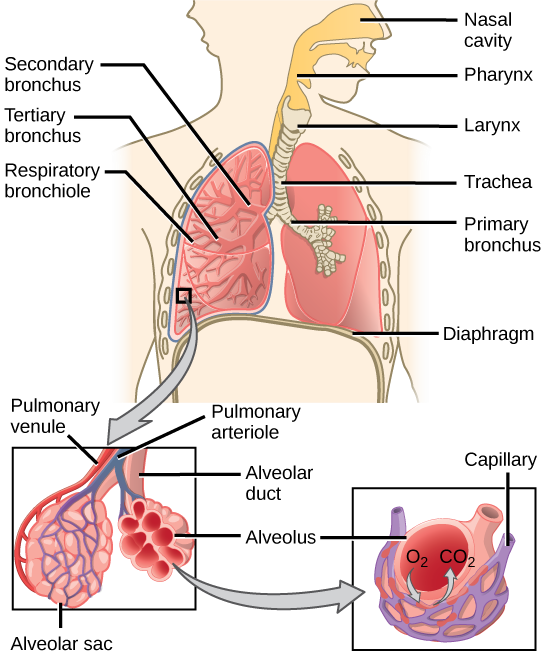
Correct Answer is A
Explanation
The diaphragm is a dome-shaped muscle that plays a key role in breathing. It separates the thoracic cavity, which contains the heart and lungs, from the abdominal cavity. When the diaphragm contracts, it moves downward and increases the volume of the thoracic cavity, allowing air to flow into the lungs. When it relaxes, it moves upward and decreases the volume of the thoracic cavity, forcing air out of the lungs.
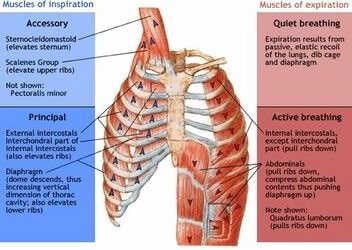
Correct Answer is A
Explanation
The nurse can logically conclude that:
✅ Treatment A results in the shortest recovery time.
- The data shows that Treatment A has a mean recovery time of 3 days, which is the shortest compared to Treatment B (5 days) and Treatment C (7 days).
The other statements are not supported by the given data:
❌ "Treatment C enhances patient satisfaction more than the others."
- There is no information about patient satisfaction, only recovery times.
❌ "Treatment B is as effective as Treatment A."
- Treatment B has a longer recovery time (5 days) compared to Treatment A (3 days), so it is not equally effective in terms of recovery speed.
❌ "Treatments A and B provide the same rate of recovery."
- Treatment A has a faster recovery time than Treatment B, so they do not have the same recovery rate.
Correct Answer is A
Explanation
- Enzymatic reactions follow a Michaelis-Menten curve.
- As substrate concentration increases, the reaction rate initially increases rapidly.
- However, at high substrate concentrations, the enzyme becomes saturated, meaning all active sites are occupied, and adding more substrate does not increase the reaction rate further.
- This leads to a plateau in reaction rate, which is represented by line A.
Analysis of the Other Lines:
- B: Shows a linear decrease, which does not represent enzyme kinetics. ❌
- C: Depicts a constant reaction rate independent of substrate concentration, which is incorrect. ❌
- D: Shows a decreasing reaction rate, which does not align with enzyme behavior. ❌
Correct Answer is D
Explanation
The largest organ in the human body by surface area is the skin. It covers the enre external surface of the body and has an average surface area of about 20 square feet in adults.
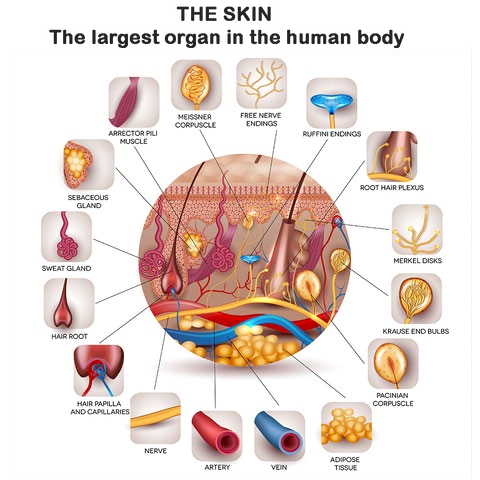
Correct Answer is D
Explanation
Ribosomes are small, spherical structures found in all living cells, including bacteria, archaea, and eukaryotes. Their primary function is to synthesize proteins using the genetic information stored in the cell's DNA. Ribosomes are composed of two subunits, one large and one small, that come together during protein synthesis.
Ribosomes read the genetic information stored in mRNA (messenger RNA) and use this information to assemble amino acids in the correct order to form a protein. The ribosome moves along the mRNA, adding one amino acid at a time to the growing protein chain until it reaches the end of the mRNA and the protein is complete.
Proteins are essential for a wide variety of cellular functions, including catalyzing chemical reactions, providing structural support, and transporting molecules across cell membranes. Therefore, ribosomes play a critical role in the overall function and survival of a cell.
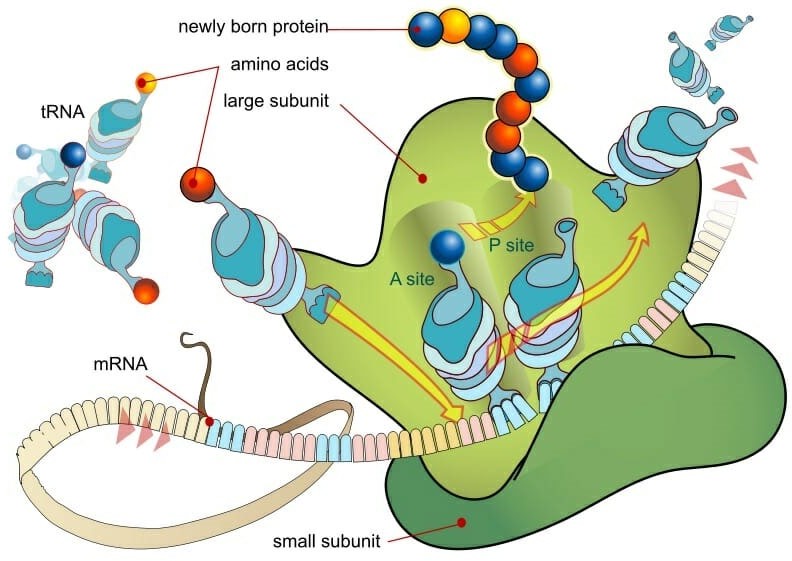
This question was extracted from the actual TEAS Exam. Ace your TEAS exam with the actual TEAS 7 questions, Start your journey with us today
Visit Naxlex, the Most Trusted TEAS TEST Platform With Guaranteed Pass of 90%.
Money back guarantee if you use our service and fail the actual exam. Option of personalised live tutor on your area of weakness.
